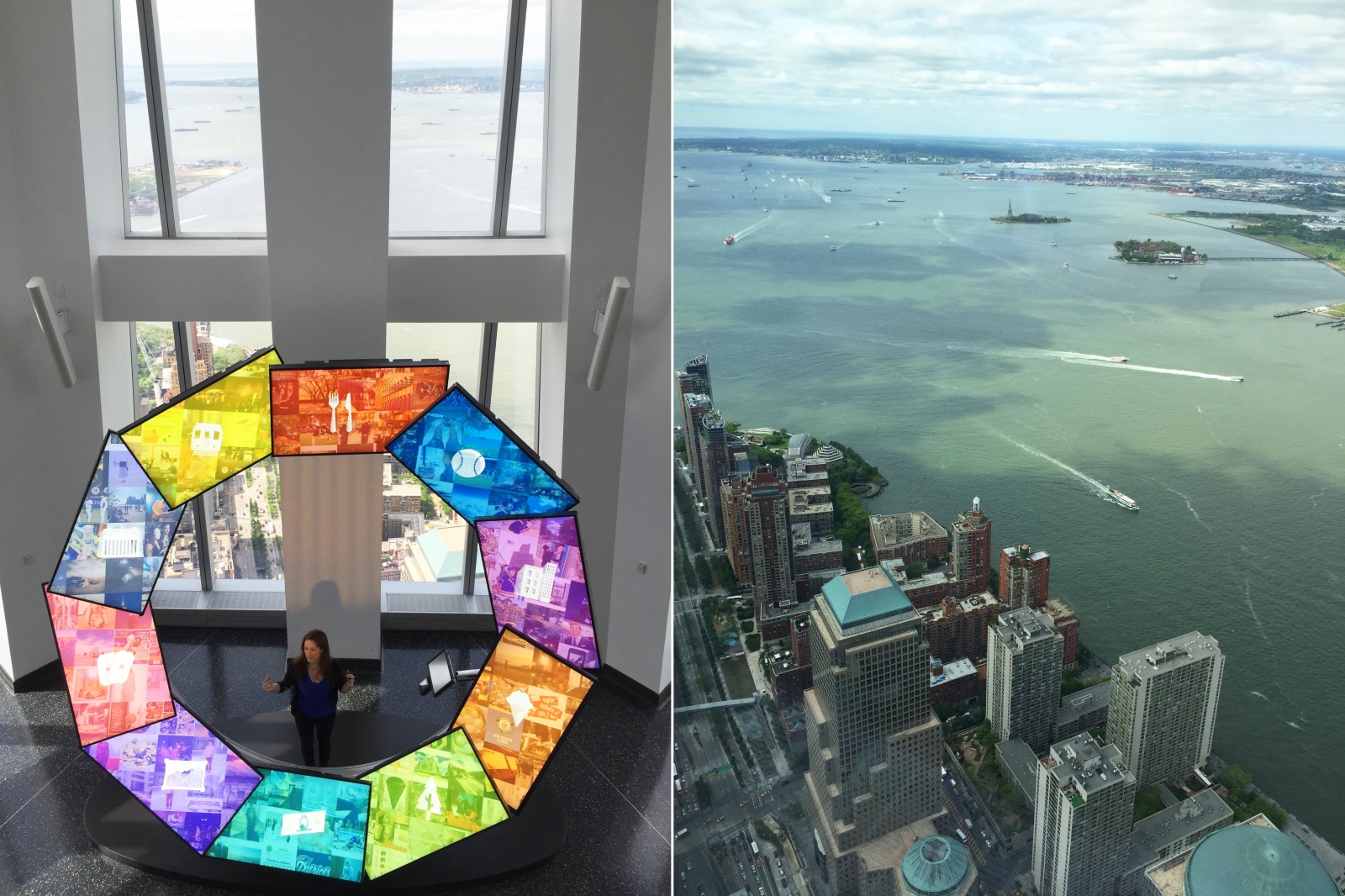
Ahead of the unveiling of One World Observatory, which opens to the public May 29, architecture critic Fred Bernstein describes how the experience stacks up against the observation levels of the world’s other iconic towers.
The best part of a visit to One World Observatory, the new attraction at One World Trade Center, may be the ride to the building’s 102nd floor. The walls of the observatory elevators are TV screens that display the development of Lower Manhattan starting around 500 years ago and ending in the present—a compelling attraction in its own right. The problem is the ride lasts only 47 seconds.
The rest of the Observatory, where visitors are allowed to spend as much time as they like, isn’t quite as spectacular as the $32 ticket price might suggest. For starters, there’s no way to go outside. That puts One World at a disadvantage in the competition with the Empire State Building observatory and the Top of the Rock, both of which offer chances to feel the high-altitude air (from the 86th and 70th floors, respectively).
True, the One World Observatory is higher than those two, but in some ways it’s too high. Great views require foreground and background, which is what makes the Top of the Rock so special—it allows visitors to take in not just distant sights, but nearby landmarks as well. From One World, everything looks far away and a bit puny.
The experience begins on the 102nd floor, with a two-minute video presentation on screens that lift up to reveal the view north toward midtown. But most of the 102nd floor is reserved for private parties—so an escalator leads visitors down to 101. But that floor is occupied by three restaurants (and a large kitchen). So another escalator leads to the 100th floor, which is where the views are, for the most part, unobstructed.
But overly complex attractions called City Pulse (rings of screens offering live twitter feeds and information about New York landmarks) stand at the north and south corners of the building—precisely where the views should have been left alone. Another attraction, called the Sky Portal, consists of TV screens that turn the floor into a “window” down to the ground, not a very convincing illusion. (It doesn’t come close to the real deal—the terrifying, 1,353-feet-high cantilevered glass floors at the Willis Tower in Chicago.)
Throughout One World Observatory, the architecture is bland, nothing like the extraordinary mix of angled glass panels and exposed steel beams that makes the top floors of the Shard, tallest building in London, such an exciting place to be. There is also no guide to what you’re seeing around you—unless you spend an extra $15 to rent a tablet with a special One World Observatory app.
But in the end, the expense, the privatization of the top two floors, and the lack of inspired design are quibbles. The Observatory offers some of the world’s most stirring vistas, as well as a chance to celebrate New York’s post-9/11 renaissance. And then there’s the elevator ride down, which simulates a helicopter flight and is almost as enjoyable as the ride up.